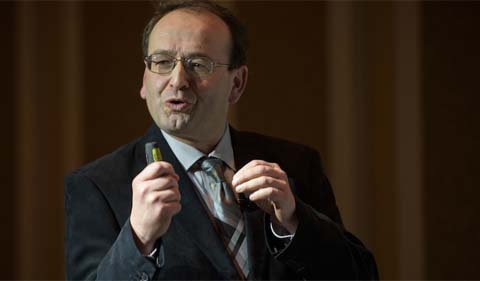Obscurants or “smoke screens” have been used on battlefields for hundreds of years and help soldiers evade enemies by masking the movement or location of military units, reports Ohio University News.
Ohio University researchers, led by Distinguished Professor Alexander Govorov, are conducting research on creating advanced nanoscale-level smoke screens. The research is funded by a cooperative agreement with the U.S. Army Research Office, which recently funded the option period.
The cooperative research project, “Electromagnetic media and aerosols with specially designed transmission spectra using plasmonic nanoshells made from inexpensive materials,” adds to previous funding for research on optically-active nanoparticles, which can be applied in the field of obscuration.
Obscuration – or a smoke screen – is an important element on the battlefield. This approach of masking the movement of troops has been used for centuries. One of the first recorded instances of the tactical use of a smoke screen was at the Battle of Macau by the Dutch, who reportedly fired a barrel of damp gunpowder into the wind to hide their landing under cover of smoke. In modern times, obscuration systems are more involved, using specialized materials such as red phosphorus particles, flakes of graphite or brass, or fog oils. Considering the physics principles of light-matter interaction, the efficiency of an obscurant will depend on the size, shape, and composition of small particles used in a cloud of smoke blocking the electromagnetic waves.




















Comments